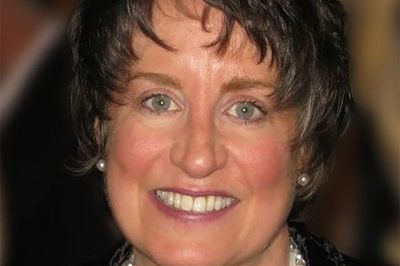By Martha Rhodes
No one could have been more surprised than I when I landed in an emergency room being saved from a self-inflicted Xanax overdose. It was utterly inconceivable that someone with as much going for her as I would ever choose to die. But severe depression eclipsed my rational thoughts.
Despite the ever-nagging sadness that underscored even the happiest days of my life since childhood, I've managed to pull off a successful career in New York advertising, stay married to a wonderful, patient husband for 36 years and raise two amazing children. That's the good news.
The bad news is, although I took antidepressants when I was first diagnosed with major depressive disorder, after many years—and unbeknownst to me—they stopped working.
After my suicide attempt, I tried different medications for several months and nothing helped. I actually felt worse than when I started, trying to find the one pill—or combination of pills—that would help me. Either they were flat-out ineffective or the side effects were simply intolerable. I was scared, frustrated and angry.
I had to manufacture a false smile when I wanted to weep, pretending to be happy so I wouldn't worry my family and friends who knew of my depression and who felt helpless to do anything about it. I felt constant guilt that I didn't have the faculties to embrace their love and support because my brain refused to operate in a way that made it possible.
Then, my sister shared an ad she had found for transcranial magnetic stimulation (TMS) therapy. I made an appointment to see if I was a candidate for the treatment. The verdict was "yes."
Initially, I was cautious about such a new technology, but I was comfortable with the research results gathered during the 20 years before it received FDA approval in October 2008.
TMS is a noninvasive therapy that uses powerful magnetic fields to stimulate the cerebral cortex. It is used to treat major depressive disorder in adults like me who failed on prior antidepressant medications.
A TMS treatment session is surprisingly simple. I sit in a reclining chair with music or TV available and I relax. At first the magnetic pulsing felt like an intense tapping on the outside of my head, like when my brother gave me a noogie when we were kids. It took me about a week to get used to the sensation, and now I hardly notice it. The TMS coil taps for four seconds, then rests for 26 seconds, on and off in that sequence for 37 minutes for a total of 3,000 pulses per session.
There is no sedative or anesthesia (as is the case with electroconvulsive therapy, or ECT) so I don't feel sleepy afterward. The best part is there are no side effects: no headache, no upset tummy, no disoriented feeling. I drive myself to and from my therapy, and appointments last less than an hour.
The initial regimen is 30 sessions over five to six weeks. Because I didn't notice an improvement in my mood until three weeks into the therapy, I had to simply trust that TMS would work. Taking a pill every morning is a tangible thing. You hold it, you swallow it, you know it's going into your bloodstream and will hopefully do the trick. I often wondered, "How the heck is an invisible magnetic pulse tapping on my head going to get rid of all this sadness and misery?"
The "lift" happened when I awoke one morning without feeling the predictable and disgusting "emotional nausea." I began to play music again during the long car rides to my treatments—it became more upbeat, and I started singing to the tunes. I reached out to people and had more energy. My tears dried up and I caught myself laughing.
Today, I'm finally out of the dark cave. I'm clearer and more centered now than I have ever felt before. Depression is a chronic illness, but with periodic TMS treatments, I manage the symptoms and lead a happy and productive life. Most important, I embrace a newfound value for my life—it really is worth living!
For more information on TMS treatments, visit www.NeuroStar.com.
When Antidepressants Failed, TMS—Transcranial Magnetic Stimulation—Saved Me From Depression
August, 20 2012
Real Women, Real Stories
Everything you need to know about women’s health — in one place.

5 Health Trends on TikTok: Heart or Hype?
Somatic exercises, snail mucin and the sleepy girl mocktail. Here’s what you should know and what's worth the hype.
April, 22 2024
Your WellnessiStock.com/georgeclerk
The Mental and Physical Load of Racial Trauma
The pain of racial bias can have lifelong effects on women’s physical, mental and emotional health
April, 10 2024
Your CareiStock.com/LUMEZIA
The Influence of Social Media on Contraception
Online opinions can sway the way we view birth control. Here’s why talking to your healthcare provider is more important than ever.
April, 10 2024
Sexual HealthiStock.com/Charday Penn
Biosimilars Basics
Biosimilars work the same as biologics, but cost a lot less. Here are some basic facts about these drugs.
April, 10 2024
Medication SafetyGoing Back to Work with Bladder Cancer
Making a plan — and knowing your rights — can make working during and after bladder cancer treatment easier
April, 09 2024
Conditions & Treatments